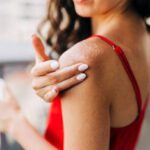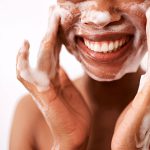Does Head Lice Stay Alive on Pillows and Sheets?
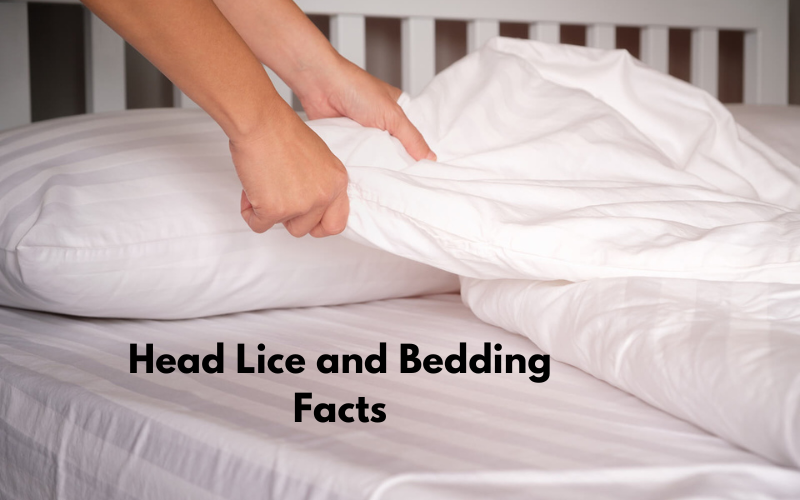
Lice… Those tony, creepy crawlies have given us all weird jittery and itchy heads at least once in our lifetime. Lice are practically the definition of tiny but mighty. They’re uncomfortable to experience, can make you a laughing stock if the issue is left up to high school bullies, or may make a few people turn their heads, and certainly not 9n a good way!
Having Lice in your hair is a very common issue that can unfortunately affect the best of us. For the most part, it’s usually children that fall victim to the yucky species, but it can sometimes happen to adults too, and trust us, it is NOT a pleasant experience. If you have memories from your days of childhood, you probably remember your grandmother, or any other hardworking lady or lad, using those thin-toothed combs to drag those nasty crawlers out. It used to be a labor of love, for sure. And, a very cumbersome one at that.
If there’s one thing one must know about lice, it is that they are determined, as determined as they come, probably even more than ants! So if one isn’t careful enough, lice transferred through children in your family can very easily make themselves at home and enjoy your nice, plushy cushions, bedding, pillows, and just about any other fabric that your body comes in contact with, yikes! Removing lice manually can be a fun bonding activity for people (in a parallel universe!) but it is no job for the ordinary (or anybody for that matter, apart from maybe monkeys). So if you’re dealing with lice, you probably need us and our “expertise” and we’re here to deliver and kiss your disappointment a long goodbye!
What is Lice?
Speaking in layman’s terms, Lice or Head Lice are tiny wingless, parasitic, blood-sucking insects that get their food (the blood) primarily from the human scalp. Considering that even the mere thought of these gross mites is enough to give us the creepy crawlies (as this is typed), it only makes sense that their effect in real life is much, much worse. When lice infest someone’s scalp, they trigger an extremely intense sensation of itching that is near impossible to bear and in many cases, can create a huge, painful rash around the hairline.
Lice can mainly be of three types and they’re all grosser than the next!
- Head Lice – This is the one we’re most familiar with and it is perhaps the most difficult out of all three to deal with, mostly because you actually have to LIVE with them for a while while they enjoy a cozy comfortable stay in your hair and have all three meals on your scalp.
- Body Lice – As the name suggests, body lice can pretty much be found anywhere on your body, and that is far worse than the ones that limit themselves to the head. Body Lice are relatively easier to deal with but they’re also the more notorious and rogue kind, as these are the kind that finds it convenient and thrilling to venture outside the grounds of your body and into the seams of the clothing to enjoy all that nice fabric.
- Public Lice – Didn’t we promise you it would get much grosser? Pubic lice, also known as “crabs” obviously affect the genitals of the human body, more specifically the hairy parts of those areas. Thankfully, they are not as common as the other variants and have a very simple & straightforward treatment but having them is pretty horrifying nonetheless.
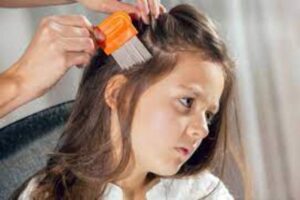

Can Head Lice Survive on Pillows and Sheets?
Simply put, a little bit, yes, but mostly, no. Lice can “fall” to the bedding or sheets with the hair they are attached to and may transfer onto the next person if physical contact with their head is established. So technically speaking, they can “live” on fabric for a while till they’re reunited with their host or find a new one. But, they can survive on linens no longer than 24 hours, and here are the reasons why:
- The temperature on furniture, linens and other fabric is mostly room-temperature and thus, not the most conducive to a louse’s survival. They need warmth, conveniently present on the human scalp to be able to stay nice & warm.
- Their little, tiny legs cannot function the same way on fabrics as they can on human hair. Those little annoying crawlers have 6 legs that are attached in such a way that they are perfect to wrap around strands of hair or fibers but not flat and wide surfaces.
- They need a host to survive. Survival is the entire purpose of a louse’s existence. Female lice lay eggs at the base of hair strands right near the scalp, and they do so fast. Because of the way they function and the fact that they have pretty much evolved to live solely on hair, they cannot lay their eggs anywhere else, meaning survival or sheets without being in contact with a human’s head is not all that possible for these crawlers.
- They eat every four hours. On average, lice “eat” or suck blood 6 times a day. They mostly load up at night (just like us!) but are also fairly regular for their mealtimes. So, going too long without food is a no-brainer recipe for disaster for lice.
How to Get Rid of Lice in Hair?
Okay, we’ve established that lice suck (pun intended) and if you or someone you know has them, swift action needs to be taken to get rid of them at the earliest possible. When it comes to getting rid of lice, there are many options out there and it is up to you to choose which one shall be the most convenient for you. You may opt for a professional hair lice treatment or try some of these DIY home remedies:
- Castor Oil and a Fine-tooth Comb
Using a thicker type of oil or any other agent is said to be extremely useful in suffocating lice. For this home remedy, you only need castor oil (you may use other thick consistency oils like olive oil or coconut but in our experience, castor works best) and a fine tooth comb (called a kaangsi in Hindi in local Indian regions). Your comb should be of a stronger, more solid material that is less likely to break if while combing, it gets stuck in tangles of hair or can’t go through a cluster of nits
Apply a generous layer of castor oil all over your head. Be sure to get to the scalp and the root because that’s where the lice and the nits are most likely to be. Once oiled, immediately get to combing the lice and the nits out. Do this by dividing your hair in sections and start at the roots with a firm pressure and comb through the lengths to the ends. This process will take time but this is also the one that works efficiently.
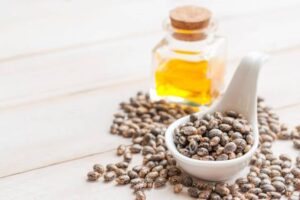

- Mayonnaise and Plastic Wrap
Okay, we know this sounds gross. We’re right with you on that one but with all those nasty crawlies on your head, we’d say this is worth a shot. Using mayonnaise on your head will most likely be messy and convenient but sometimes you have to pay that price, especially when the reward is bound to be so satisfactory. It is important to note that there is no real research or evidence that suggests Mayonnaise is good for killing lice but people use this home remedy a lot and the general consensus suggests that it sure does work!
Mayonnaise is basically just fat, and of the kind that is pretty thick. It works by smothering the lice and partially stunning them so that they don’t move as fast and easier to locate and remove. It is also very slippery, meaning it can work on your hair strand to loosen the lices grip. All you need is to apply a good amount of mayonnaise all over your head and cover your head with plastic wrap or a shower cap, this is very likely to feel weird but that is kind of the whole point? Let the mayonnaise sit for 15 to 30 minutes, then comb out the lice and nits using a fine-tooth comb. Once done, immediately wash off the mayonnaise with a strong shampoo, preferably one that is specifically created for removing hair lice. Repeat after two days if necessary.
- Tea-tree oil
Tea tree oil is a type of essential oil that is very potent in nature. It is often found in hair care products because of its effectiveness towards concerns like dandruff, fungal infestations, bacterial growth, and well, lice termination. Tea tree oil is very potent and can irritate your scalp if used in large quantities. Something that is this potent on human skin can surely be enough to agitate lice. Hence this remedy can do wonders if used correctly.
In a small bowl, take some good quality, pure tea tree oil. Be sure to not add more than 5-7 drops. To this bowl, add a carrier oil of choice, any type of hair oil that suits your hair type or you like to use (we recommend almond oil) or add your choice commercial hair mask (you may even use a blend of yogurt and onion grounds). Mix your ingredients up till they’re well combined and go to town on your hair. Apply evenly all over the scalp, wait for 10 minutes and get to combing. Once you’re satisfied and cannot comb out any more lice or nits, wash off all that product. Repeat every 5 days, if necessary till all the lice are gone.
- Salt and Vinegar
In their scientific forms, salt and vinegar are known as sodium chloride and acetic acid. When combine, these two make a potent chemical combination that reacts on the scalp and prevents nits from hatching into lice. This remedy is super simple to use, doesn’t require you to do much at all except for preparing a solution using ¼ cup salt with ¼ cup vinegar and ⅛ cup water. Mix all three until they’re fully combined and store in a spray bottle. Spray on to the head till the scalp is fully coated. And let the mixture sit & dry for 2 hours. Wash off with shampoo afterwards and be sure to apply conditioner as the solution is likely to dry out your hair.
- Neem Paste
If you’re from an Indian household, there’s no doubt you’ve been acquainted with the endless benefits and specialities of the herb called Neem. The leaves of the Neem tree are small but packed ayurvedic powerhouses that can do just about anything. They are antibacterial and antifungal. Mostly popular for their effectiveness in combating acne in oily-skinned people, neem leaves are also quite good for hair concerns (a lesser known fact).
Blendin neem leaves with a little dash of water and a drop or two of tea tree oil can create a great blend that is ready to apply straight to the scalp and the roots of your hair. Once applied evenly, this mixture should be left on the head till it dries off completely, then washed off with water, followed by running a fine-tooth comb through the wet hair to extract all the lice and the nits.
How to Get Rid of Lice in Bedding?
You already know that lice cannot survive without a host i.e. being on someone’s head for more than 24 hours, so there’s no real reason for you to be panicking and turning your home upside down. However if you want to clean your house and all the linens after having a confirmed case of lice in one or more of the residents of the house, even after they’ve been treated, jut to be sure, we recommend you take the following steps:
- Washing and Dry
Wash all fabrics where you suspect lice could have landed. This includes sheets, duvets, pillow covers, cushion covers, clothes, etc. Wash them with a very hot eater (the high temperature will help in killing the lice efficiently) using your normal everyday detergent and some antiseptic liquid. Follow this by drying them for 30-ish minutes using high heat to get rid of any remaining nits.
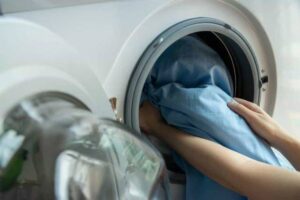

- Vacuuming
This may not be a common practice in most Indian households but if you have access to a vacuum cleaner, we suggest you use it. Vacuum on the highest setting, the surfaces and other pieces of furniture that cannot be washed to eliminate lice from the general areas of your house faster. These may include rugs, sofas, curtains, couches, mattresses, pillows, etc.
- DIY Bleach Spray
For bedding or soft furniture that won’t be harmed by bleach, using this home remedy is a good idea for people that may be paranoid about any remnants of lice and want them gone at the earliest without indulging in store-bought sprays that contain pesticides or getting your entire home fumigation (which is not only expensive but also a rather drastic step to deal with lice that will be dead in a few hours anyway.) For this remedy, you must mix 2 tablespoons of bleaching powder and 2 cups of water. Store this solution in a spray bottle. Do a sort of patch test by spraying the solution on a small section and wait for a few minutes to ensure that it does not damage the material, then start spraying on the desired surface generously.
- DIY Essential Oil Spray
If you’re someone who has delicate bedding or other soft furnitures and linens that you suspect cannot handle the potency of hard bleach, you can alternatively try to use essential oils that repel lice naturally. In a container, combine 1 ½ cup of water with 20 drops of lavender, rosemary or peppermint oil (you may use a blend of all three if you wish to do so) and transfer to a spray bottle. Shake well before usage and spray the solution onto desired surfaces generously.
How to Prevent Lice Infection?
If you’ve heard of the phrase “prevention is better than cure”, you’re aware that these truly are words to live by, so if you’re someone who has dealt with lice before or someone who would just like to avoid it in the future, here are some things you should keep in mind:
- Avoid having hair to hair contact with someone who you suspect may have head lice. Instruct your children to do the same.
- Avoid sharing personal belongings that may come in contact with heads in general with this person. The belongings can be towels, clothes, hats or caps, helmets, headphones, scarves or combs.
- Staying hygienic, keeping your hair clean, checking for lice every now and then, washing sheets and other home items at appropriate intervals, etc.
Parting Note
By now, you’re aware of all the vices that lice (rhyme intended?) bring along with them. Lice are down right annoying and can often be a cause for being bullied, mistreated or shamed. Having lice is normal and is often nobody’s fault, just bad luck. The key when dealing with lice is not to panic. Stay calm, think logically and use the help of a guide like this one that we’ve prepared for you. Follow the advice and remedies mentioned here, take the preventive steps and you should be good to go.







